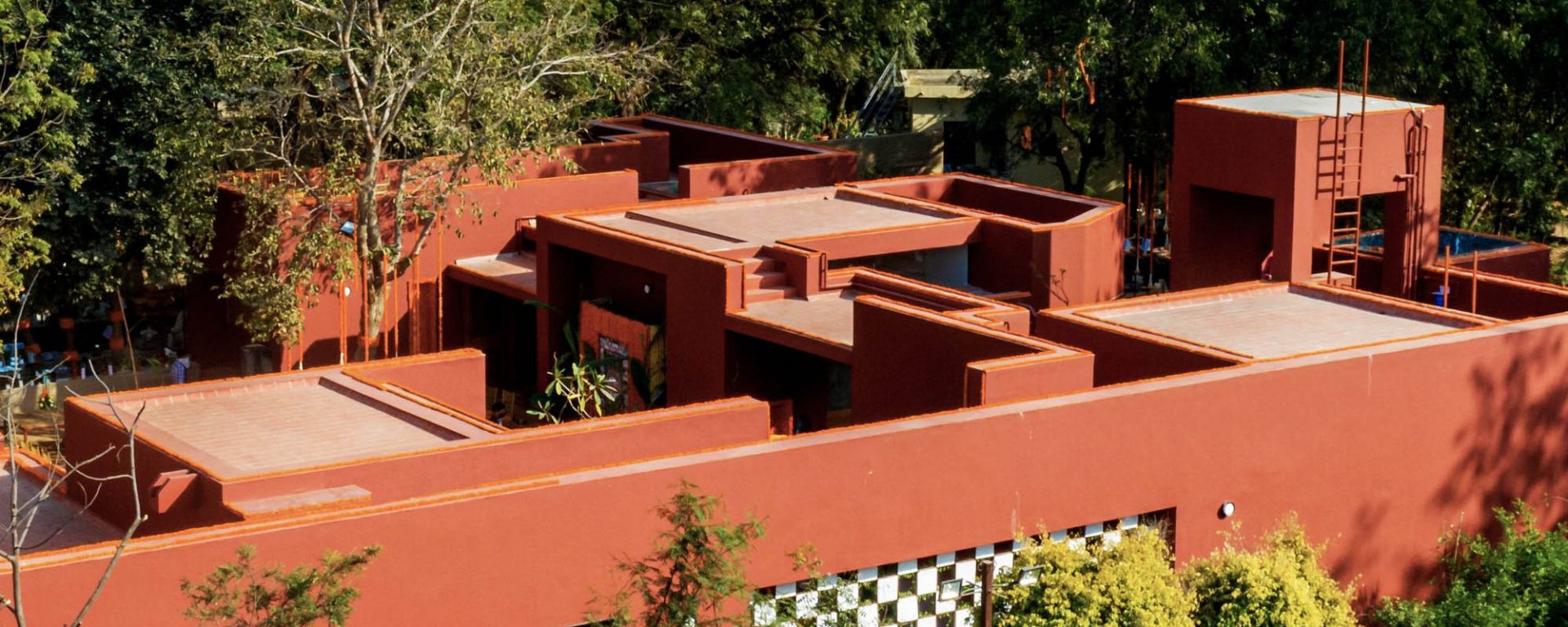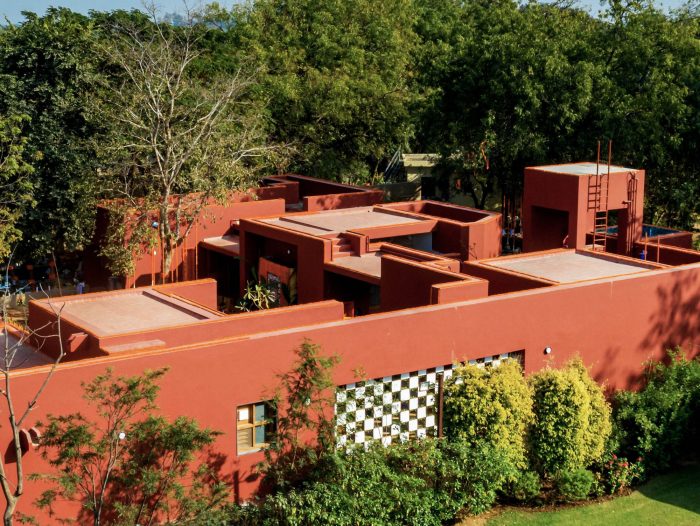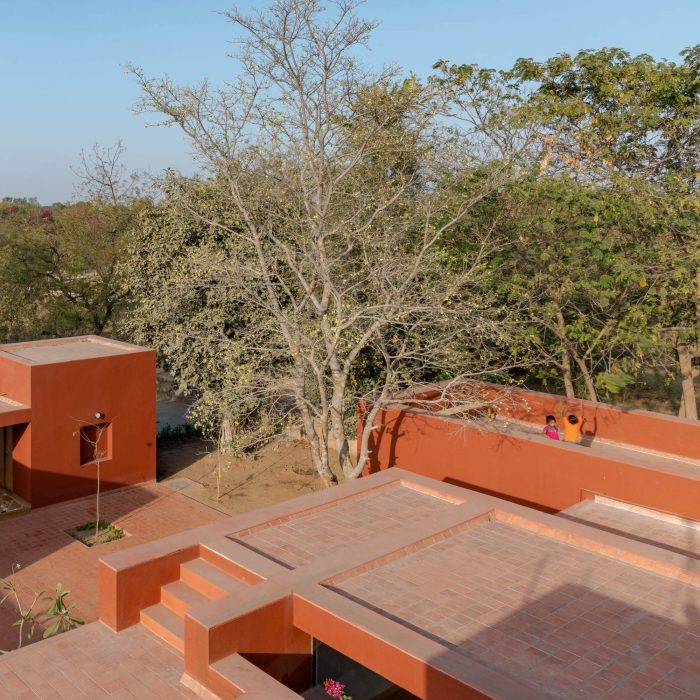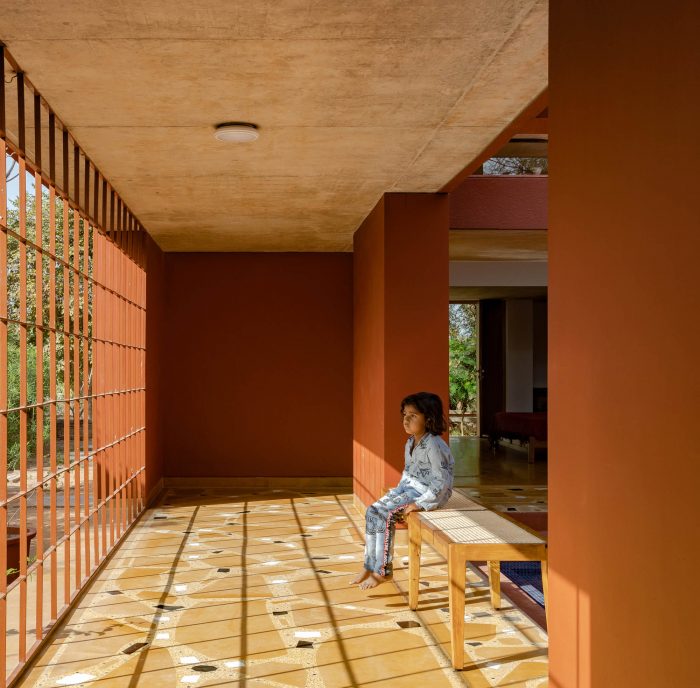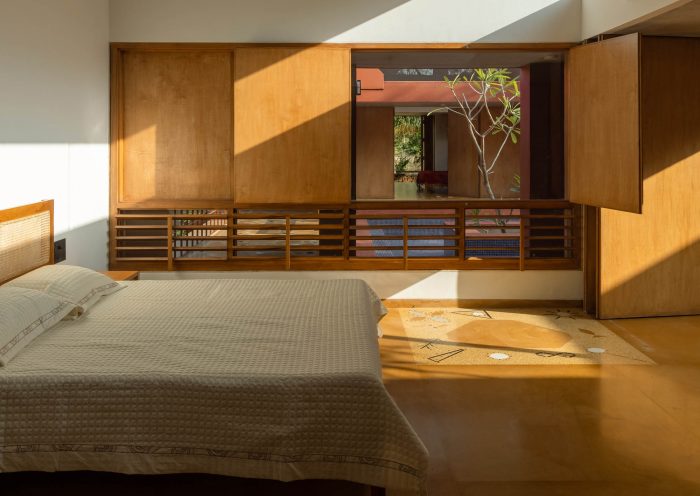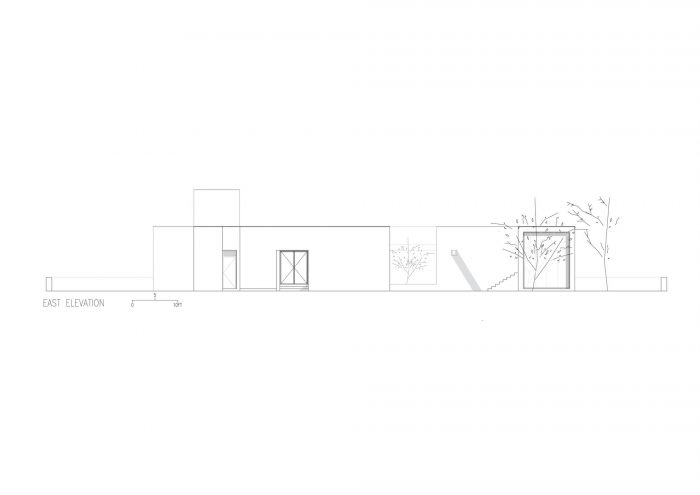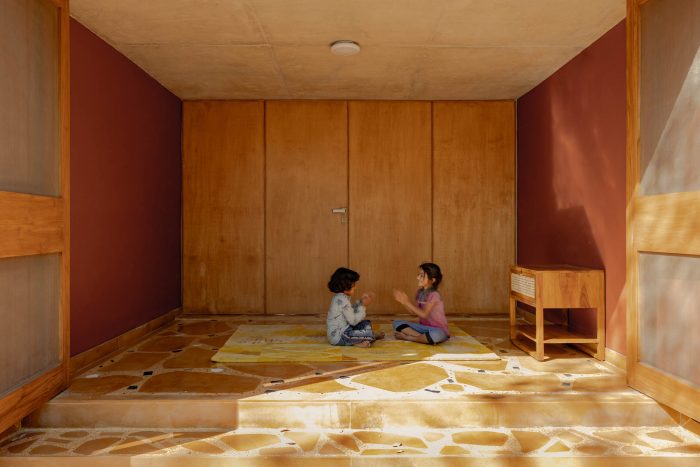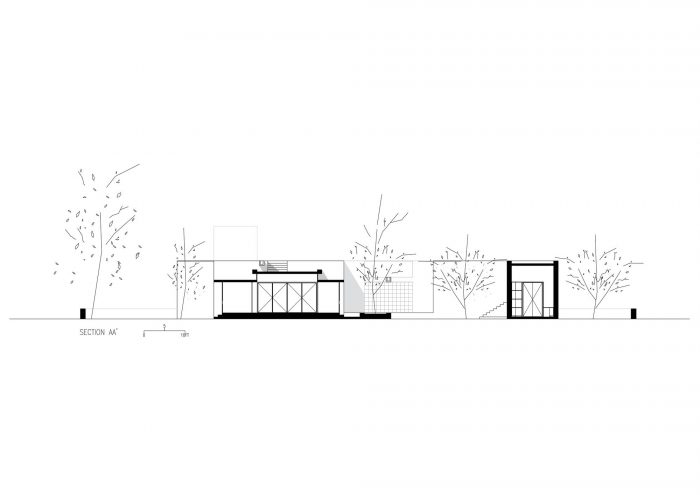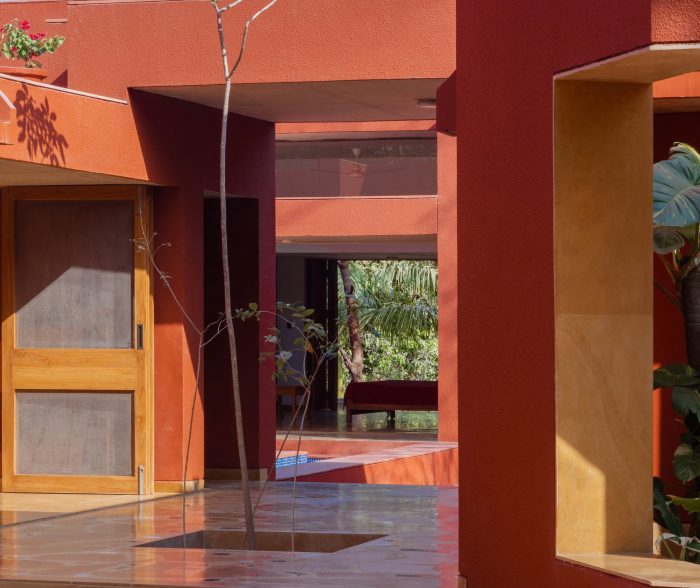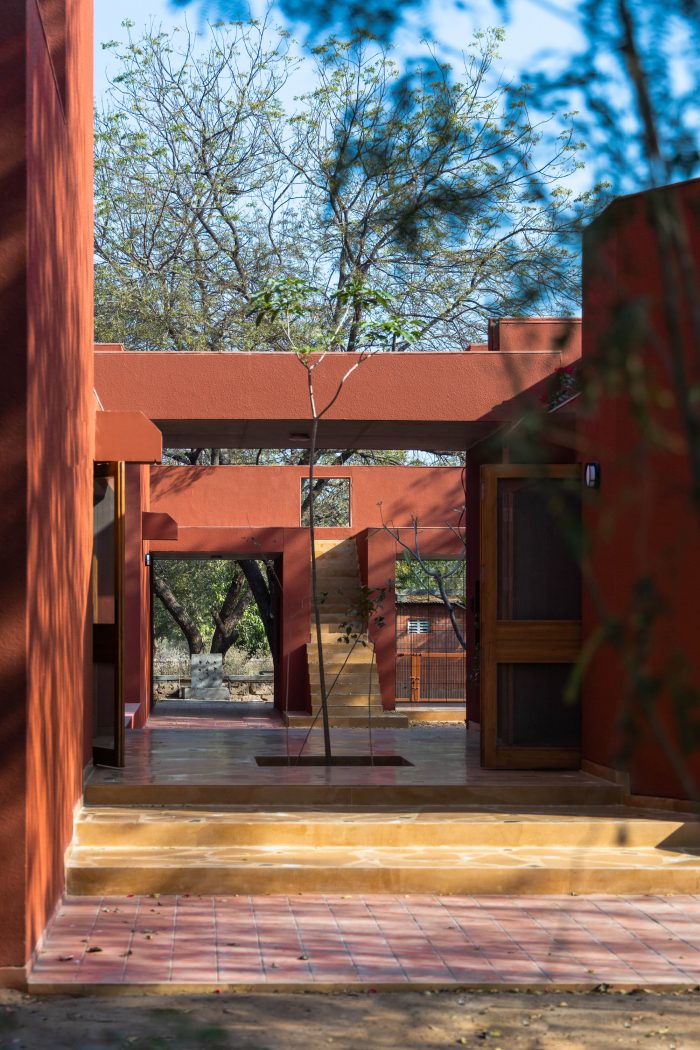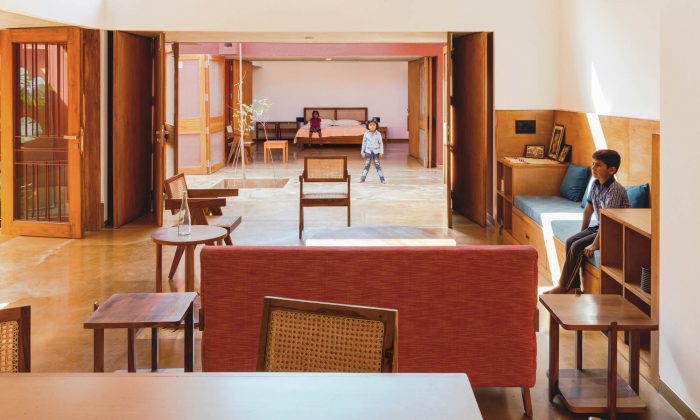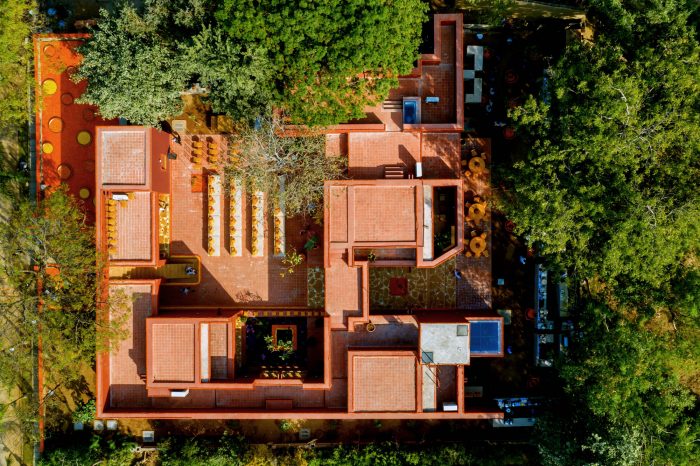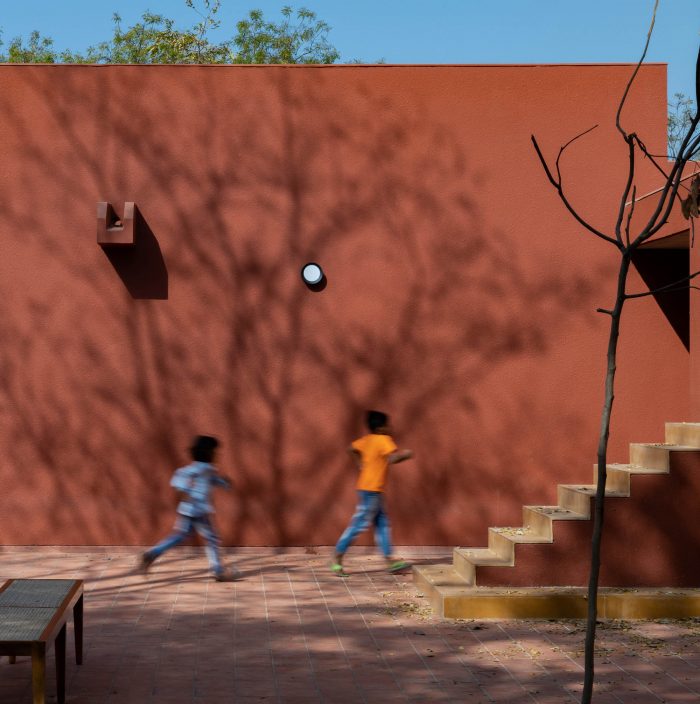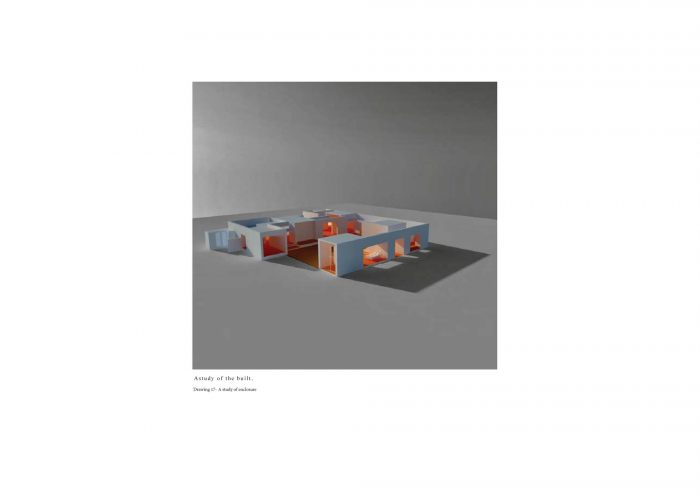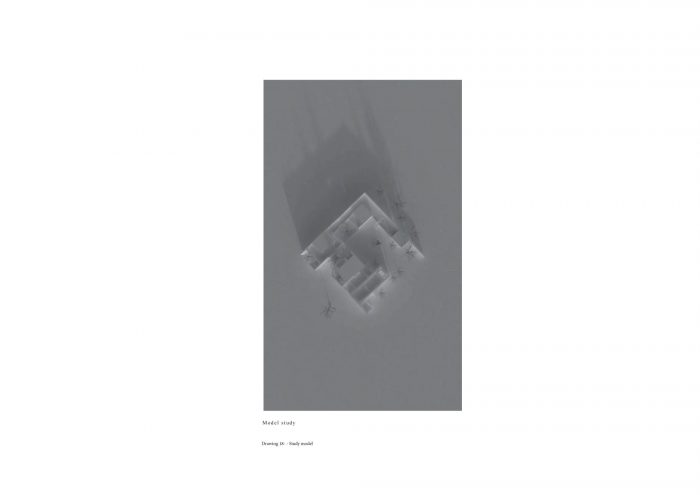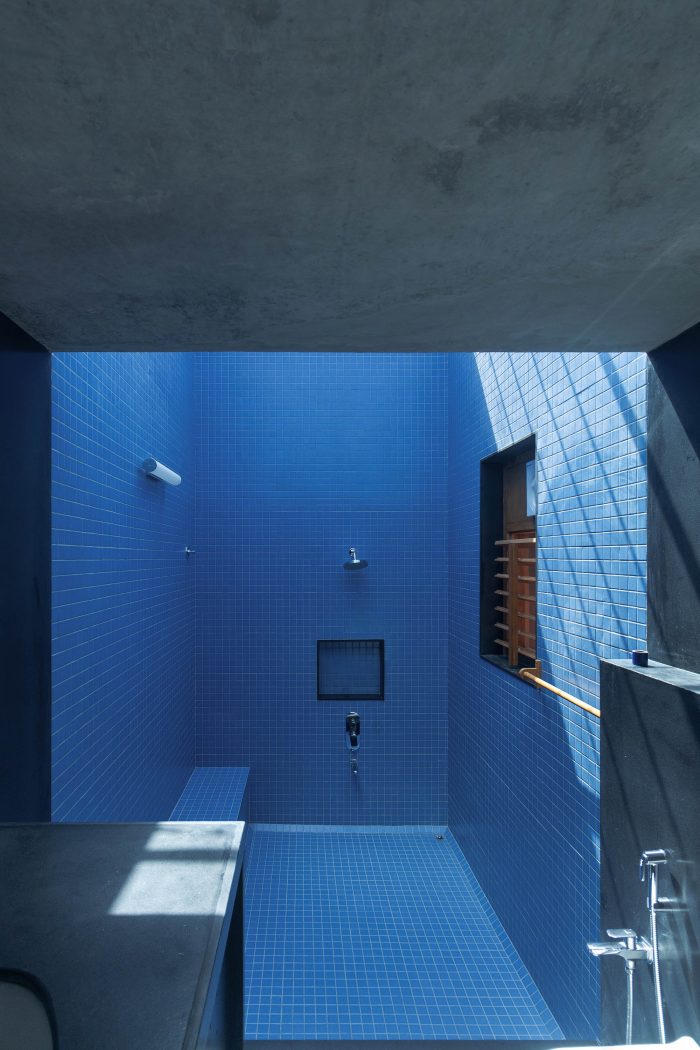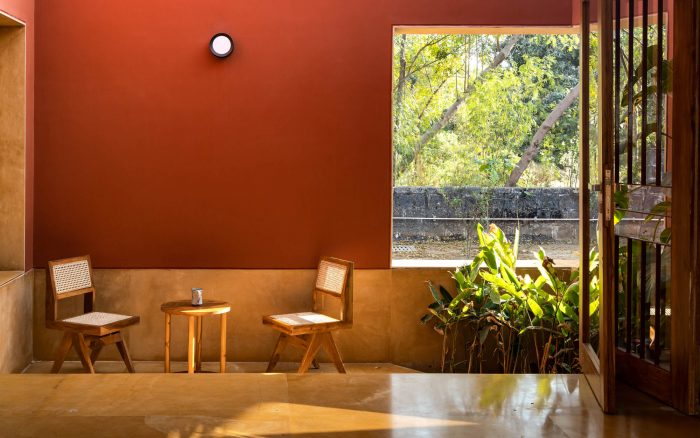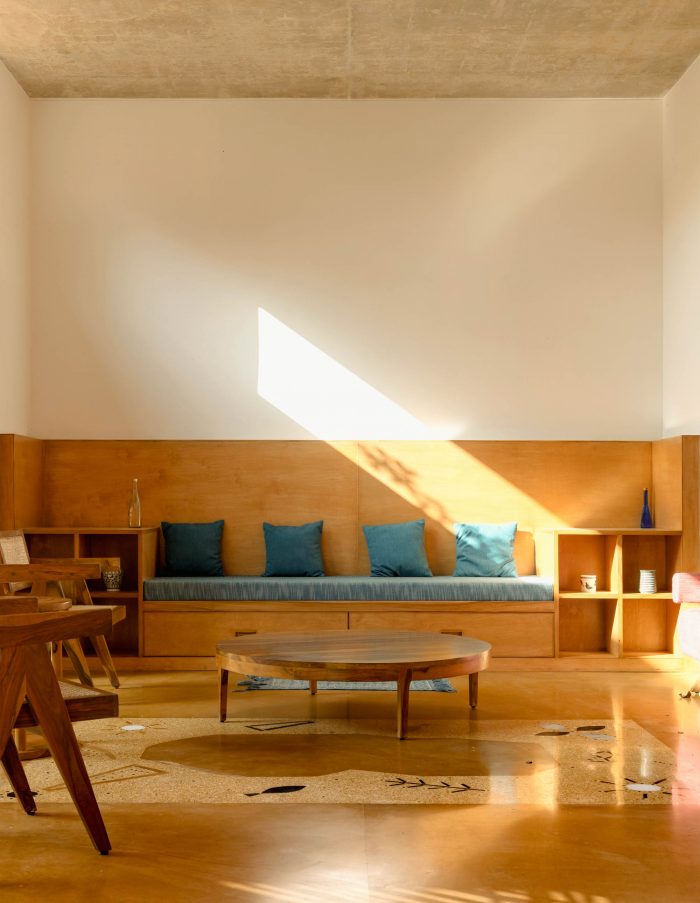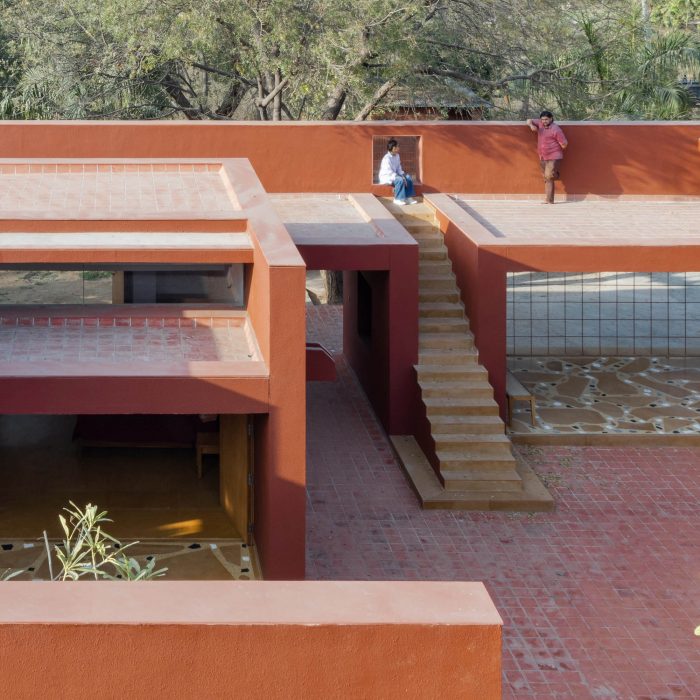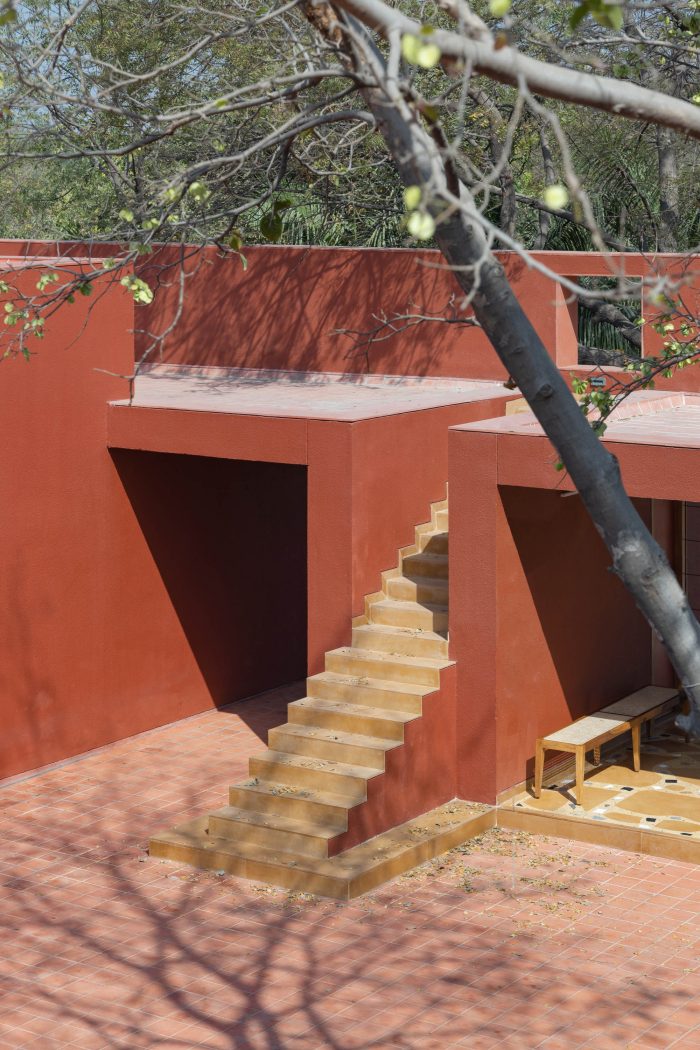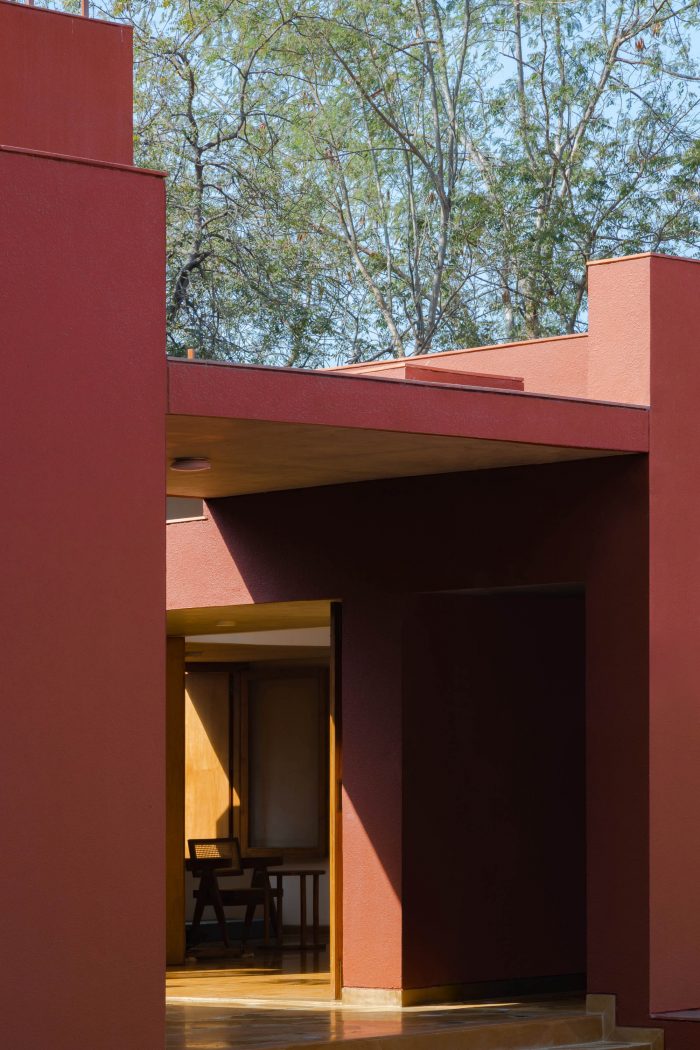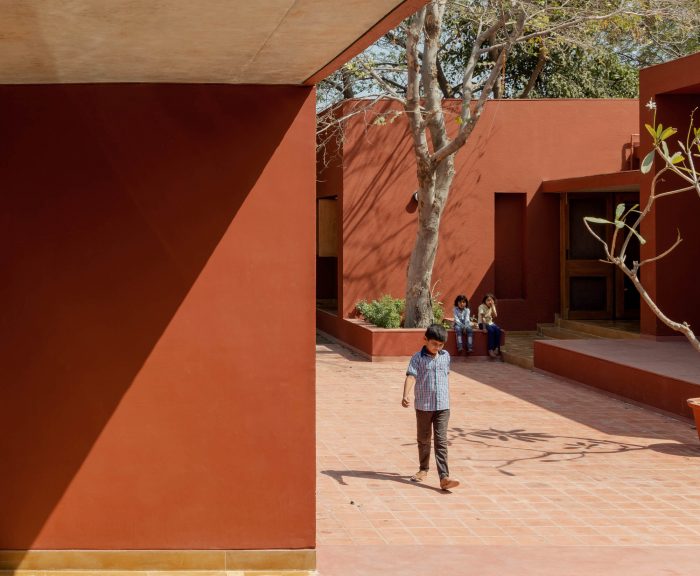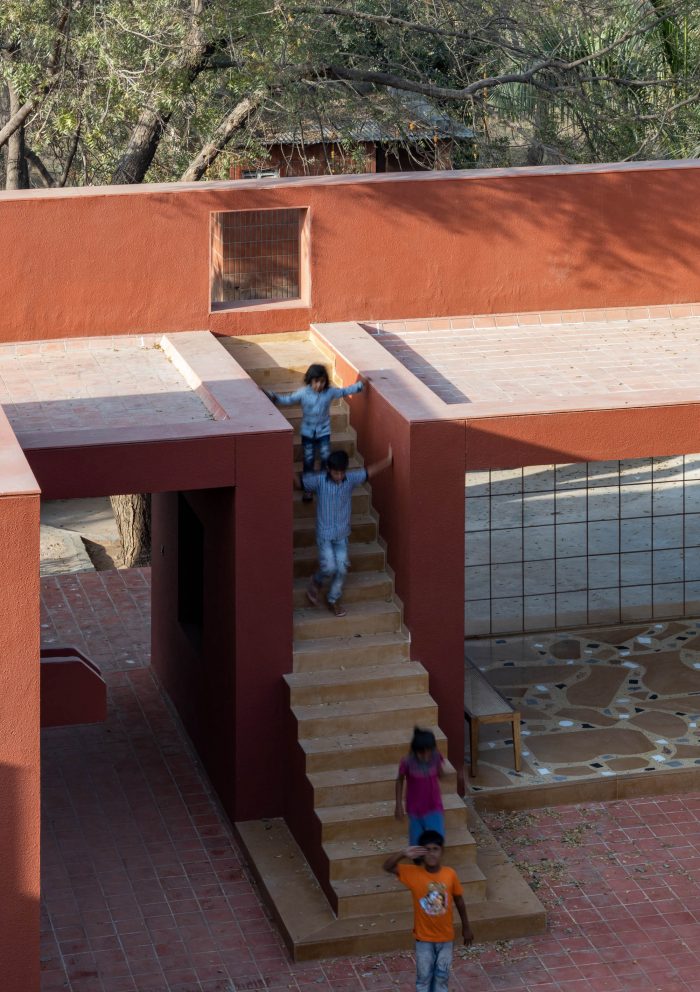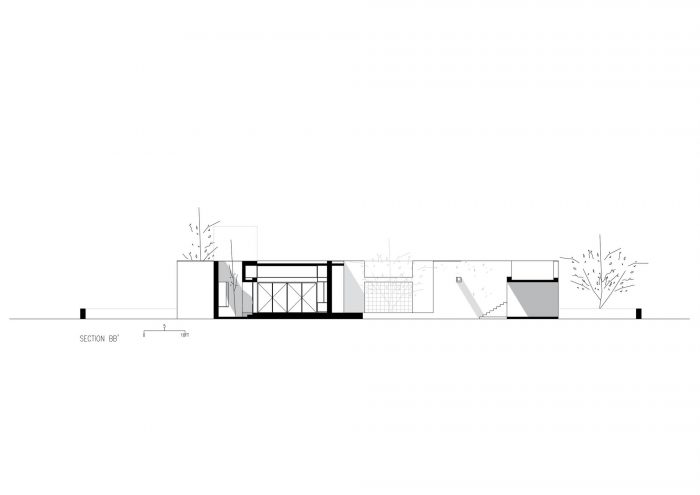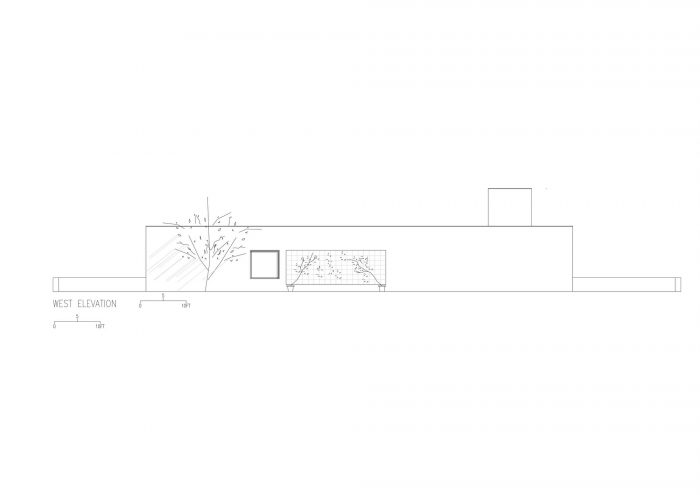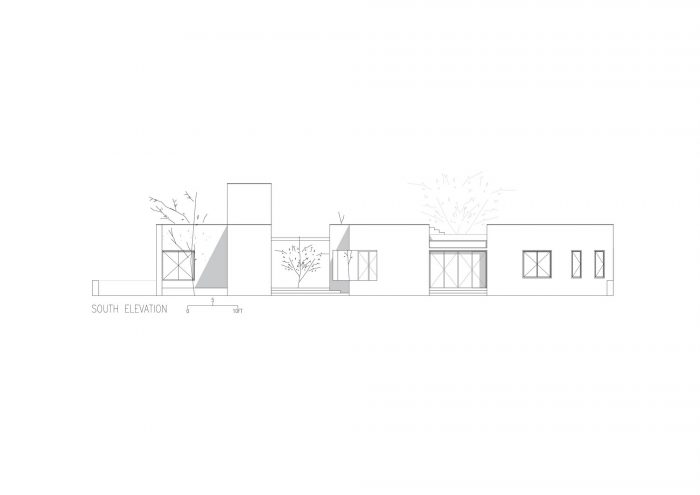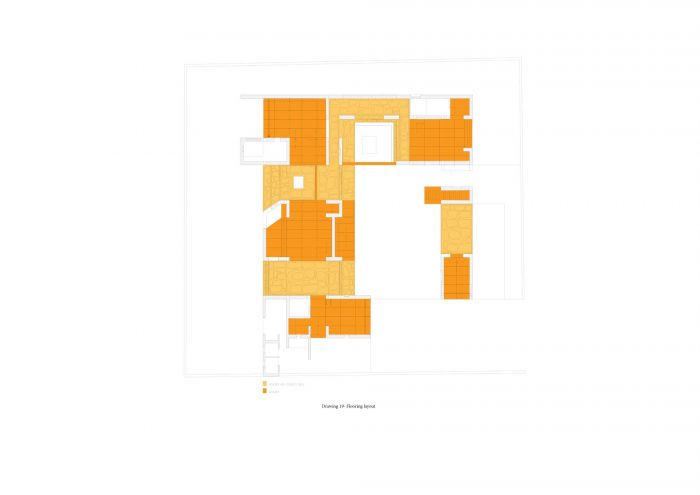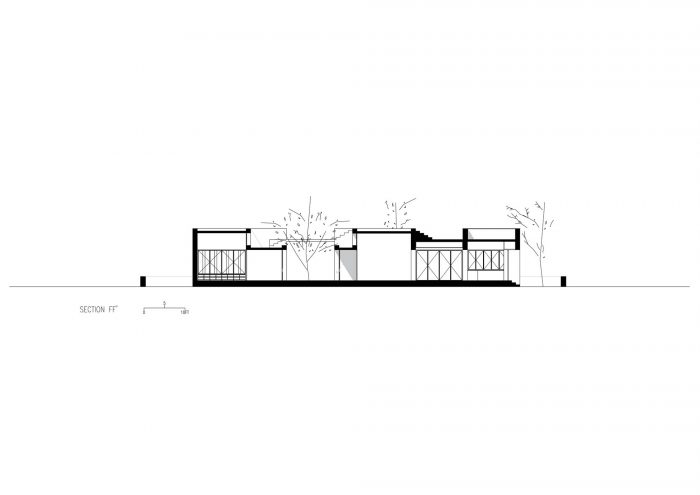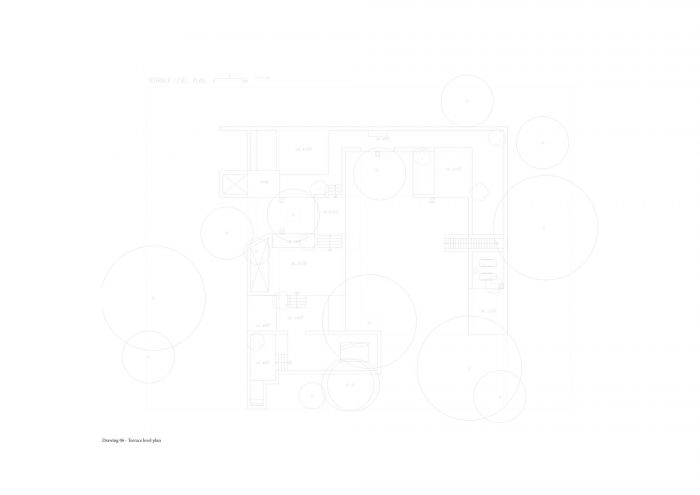这是一个7口人的家,它位于古吉拉特邦的萨南德。这个家一直在探究定居的意义,这是一个人众多方式中的一种。它开始于这样一个问题:一旦它被占用并使用建筑工具进行调节,人们将如何看待该地的景观,相对于之前如何看待它.人们将如何在建筑后的同一块土地上穿越。人们会在什么地方看,在什么地方看?
This is a home for a family of 7 people and it is located in Sanand, Gujarat. The home has been an inquiry into what it means to settle, one of the many ways in which one can do that. It began with the question of how will one perceive the landscape of the site once it’s been occupied and conditioned using the tools of construction vis a vis how it was seen before. how will how one traverse over the same piece of land post construction. What will one look into, over and at?
客户在他们的简介中希望有一栋房子能改变他们与户外的关系。这个房子目前是作为第二居所使用,最终可能作为第一居所使用。 这个项目在某些方面是对他们目前位于相当密集的城市环境中的住宅的分解。将街区分隔开来,在两者之间创造空间的想法有两个方面。
The clients in their brief wanted a house that would change their relationship to the outdoors. The home is at present to be used as a second home, and may eventually be occupied as a first home. The project in some ways is a disaggregation of their current home located in a fairly dense urban setting. The idea of separating the blocks to create space in between was twofold.
一个是为树木和水体创造空间,这些东西经历了缓慢的变化,在某种程度上是有生命力的。另一个是创造距离,使人们可以通过房子看到景观,再通过房子看到连续的目光。
One was to create space for trees and water bodies, things that undergo slow changes and are alive in some capacity. and the other was to create distance so that one could see through the house and over the landscape and again through the house in continuous glances.
视觉上的连续性和组织性,使活动能够溢出来的想法是必不可少的。我们努力理解如何克服将住宅分割成孤立的部分,而是要有一个综合体。一个家作为一个空间的集体,而不是一个空间的集合,因为关系的顺序会受到时间的影响,就像一个景观一样。正是廊道和庭院的层次,以及通过门的移动将所有这些空间连接和断开的可能性,使得这种现象得以实现。
The idea of visual continuity and organizing to enable activities spilling over as essential. There was an effort put to understand how one could overcome the discretization of a home into isolated parts but rather have a synthesis. A home as a collective of spaces as opposed to a collection of spaces, as the order of relationships are then subject to time, the way it is with a landscape. It is the layers of verandahs courtyards and the possibility to connect and disconnect all of these by the movement of the doors that enables this phenomenon.
建筑师:Raghuveer Kathpalia
面积 : 430 m²
年份:2021年
照片:Vinay Panjwani, Karan Gajjar / The Space Tracing Company
制造商:Havells, Lalji Handicrafts, Philips
首席建筑师:Raghuveer Kathpalia, Parth modi
工作图纸:Parth Modi
现场协调:Parth Modi
Capentry:Prabhu Bhai
水磨石地板施工单位:Roshanlal Rela
结构工程:V.R Shah Engineers
Mep工程:Jhaveri Associates
城市 : Sanand
国家:印度
Architects: Raghuveer Kathpalia
Area: 430 m²
Year: 2021
Photographs: Vinay Panjwani, Karan Gajjar / The Space Tracing Company
Manufacturers: Havells, Lalji Handicrafts, Philips
Lead Architects: Raghuveer Kathpalia, Parth modi
Working Drawings:Parth Modi
Site Coordination:Parth Modi
Capentry:Prabhu Bhai
Terrazzo Flooring Constructor:Roshanlal Rela
Structural Engineering:V.R Shah Engineers
Mep Engineering:Jhaveri Associates
City:Sanand
Country:India

